Enhancing Meteorological Insights: A Study of Uncertainty in CALMET
Abstract
1. Introduction
2. Methods
2.1. Microscale Meteorological Model CALMET
- Input data processing: integrates mesoscale model outputs, meteorological observations, topography, and land-use classifications;
- Wind field model: generates three-dimensional wind fields, considering terrain and local effects;
- Atmospheric stability model: estimates turbulence characteristics and determines mixing layer height;
- Local meteorological processes: simulates coastal and slope winds, urban heat effects, and interactions with terrain obstacles [39].
- Method 1: utilizes only meteorological station data, excluding mesoscale meteorological model results;
- Method 2: relies solely on mesoscale meteorological model outputs without incorporating meteorological station data;
- Method 3: combines mesoscale meteorological model outputs with data from meteorological stations.
2.2. Input Data
- Mesoscale Meteorological Data:
- Obtained from ALADIN simulations nested within the global forecast ensemble ECMWF;
- In the Republic of Slovenia, these datasets are provided by the Slovenian Environment Agency (ARSO);
- The data include 1 h resolution forecasts of atmospheric conditions for up to 72 h ahead;
- The forecast ensemble features a vertical resolution of 48 layers with a grid spacing of 4.4 km;
- The parameters include vertical velocity, pressure, cumulative precipitation, cumulative solar radiation, temperature, u- and v-components of wind speed, and relative humidity for each layer.
- Downscaled CALMET Data:
- Mesoscale meteorological data derived from ALADIN simulations, nested within the global forecast ensemble of the ECMWF (European Centre for Medium-Range Weather Forecasts).
- Topography:
- Terrain data sourced from the Shuttle Radar Topography Mission (SRTM) collection;
- Spatial resolution of 90 m [28].
- Land Use:
- CORINE land cover data (2018), providing land use information with a spatial resolution of 100 m [29].
2.3. Meteorological Data from Measurement Stations (MAS)
- Routine maintenance of the equipment;
- Regular calibrations to uphold accuracy;
- Maintaining traceability for all measurement-related activities.
2.4. Calculation of Combined Measurement Uncertainty
2.5. Uncertainty of Deviation Resulting from Individual Measurements
2.6. Uncertainty BIAS
2.7. Temperature Measurement Uncertainty
- uncertainty of accuracy from the reference method (usp,T);
- uncertainty of resolution from the reference method (ur,T);
- calibration uncertainties of the reference method (uc,T);
- uncertainty based on systematic difference (BIAS) (uBIAS,T);
- uncertainties due to deviations in GWD (uRT,T).
2.8. Relative Humidity Measurement Uncertainty
- uncertainty of accuracy from the reference method (usp,RH);
- uncertainty of resolution from the reference method (ur,RH);
- calibration uncertainties of the reference method (uc,RH);
- uncertainty based on systematic difference (BIAS) (uBIAS,RH);
- uncertainties due to deviations in GWD (uRT,RH).
2.9. Measurement Uncertainty of Wind Speed
- uncertainty of accuracy from the reference method (usp,v);
- uncertainty of resolution from the reference method (ur,v);
- calibration uncertainties of the reference method (uc,v);
- uncertainty based on systematic differences (BIAS) (uBIAS,v);
- uncertainties due to deviations in GWD (uRT,v)
2.10. Measurement Uncertainty of Solar Radiation
- uncertainty due to zero offset of the reference method (uZERO,S);
- uncertainty due to drift of the reference method (uD,S);
- uncertainty due to nonlinearity of the reference method (uL,S);
- uncertainty due to temperature response of the reference method (uT,S);
- uncertainty due to the angle of incidence of the sun (uS,S);
- uncertainty due to spectral selectivity of the reference method (uss,S);
- uncertainty due to the tilt of the reference method (uTR,S);
- uncertainty due to resolution of the reference method (ur,S);
- calibration uncertainties of the reference method (uc,S);
- uncertainty based on systematic difference (BIAS) (uBIAS,S);
- uncertainties due to deviations in GWD (uRT,S).
2.11. Probability Distributions of Individual Contributions
3. Results and Discussion
3.1. Temperature
3.2. Relative Humidity
3.3. Wind Speed
3.4. Solar Radiation
3.5. Practical Implications of Findings
- For energy transmission, accurate meteorological forecasts are critical for assessing transmission efficiency and optimizing the operation of high-voltage power lines. Temperature and wind speed directly influence line sagging and energy losses, while solar radiation data contribute to the integration of renewable energy sources into the grid. Reducing measurement uncertainty enhances grid stability and energy distribution reliability;
- For agriculture, meteorological models are widely used in crop management, irrigation planning, and extreme weather prediction. The reduction of uncertainty in temperature and solar radiation forecasts allows for better decision-making in planting schedules, pest control, and yield optimization, particularly in regions with high climatic variability;
- For disaster management, reliable meteorological models are essential for early-warning systems and risk mitigation strategies. Improved accuracy in wind speed and humidity predictions contributes to better wildfire risk assessments, while enhanced temperature and precipitation estimates support flood forecasting and drought monitoring.
4. Conclusions
Supplementary Materials
Author Contributions
Funding
Institutional Review Board Statement
Informed Consent Statement
Data Availability Statement
Conflicts of Interest
Abbreviations
| ALADIN | The forecast of a computational meteorological model |
| ARSO | Agencija Republike Slovenije za okolje (Slovenian Environment Agency) |
| BIAS | BIAS error (systematic measuring error) |
| CALMET | CALifornia METorological model |
| CALPUFF | CALifornia PUFF model |
| CORINE | Land-use coverage database |
| EFAS | European Flood Awareness System |
| ECMWF | European Centre for Medium-Range Weather Forecasts |
| ELES | Sistemski operator kombiniranega prenosnega in distribucijskega elektroenergetskega sistema Slovenije (System Operator of the Combined Transmission and Distribution Power System of Slovenia) |
| GWD | Generated wind data |
| MAS | Meteorological data from measurement stations |
| MV | The value of the individual parameter |
| RSS | The sum of residuals |
| SRTM | Shuttle radar topography mission |
References
- Jain, H.; Dhupper, R.; Shrivastava, A.; Kumar, D.; Kumari, M. Leveraging machine learning algorithms for improved disaster preparedness and response through accurate weather pattern and natural disaster prediction. Front. Environ. Sci. 2023, 11, 1–14. [Google Scholar] [CrossRef]
- Collins, B.; Lai, Y.; Grewer, U.; Attard, S.; Sexton, J.; Pembleton, K.G. Evaluating the impact of weather forecasts on productivity and environmental footprint of irrigated maize production systems. Sci. Total Environ. 2024, 954, 176368. [Google Scholar] [CrossRef] [PubMed]
- Županić, F.Ž.; Radić, D.; Podbregar, I. Climate change and agriculture management: Western Balkan region analysis. Energy Sustain. Soc. 2021, 11, 1–9. [Google Scholar] [CrossRef]
- Park, H.; Chung, S. Utilization of a Lightweight 3D U-Net Model for Reducing Execution Time of Numerical Weather Prediction Models. Atmosphere 2025, 16, 60. [Google Scholar] [CrossRef]
- Bogataj, L.K.; Sušnik, A. Challenges to Agrometeorological Risk Management—Regional Perspectives: Europe. In Managing Weather and Climate Risks in Agriculture; Springer: Berlin/Heidelberg, Germany, 2019; Volume 11. [Google Scholar]
- EU MET SAT. 2025. Available online: https://www.eumetsat.int/ (accessed on 5 March 2025).
- ECMWF. 2025. Available online: https://www.ecmwf.int/ (accessed on 5 March 2025).
- ELES. 2025. Available online: https://www.eles.si/en (accessed on 5 March 2025).
- Lei, M.; Shiyan, L.; Chuanwen, J.; Hongling, L.; Yan, Z. A review on the forecasting of wind speed and generated power. Renew. Sustain. Energy Rev. 2009, 13, 915–920. [Google Scholar] [CrossRef]
- Kang, S.; Hadadi, S.; Yu, S.; Lee, S.-I.; Seo, D.-W.; Oh, J.; LeeWind, J.-H. resource assessment and potential development of wind farms along the entire coast of South Korea using public data from the Korea meteorological administration. J. Clean. Prod. 2023, 430, 139378. [Google Scholar] [CrossRef]
- van der Meer, J.; Callier, M.; Fabi, G.; van Hoof, J.L.; Nielsen, R.; Raicevich, S. The carrying capacity of the seas and oceans for future sustainable food production: Current scientific knowledge gaps. Food Energy Secur. 2023, 12, e464. [Google Scholar] [CrossRef]
- Mirás-Avalos, J.M.; Escalona, J.M.; Pérez-Álvarez, E.P.; Romero, P.; Botia, P.; Navarro, J.; Torres, N.; Santesteban, L.G.; Uriarte, D.; Intrigliolo, D.S.; et al. Upgrading and validating a soil water balance model to predict stem water potential in vineyards. Agric. For. Meteorol. 2024, 359, 110281. [Google Scholar] [CrossRef]
- del Río, S.; Álvarez-Esteban, R.; Alonso-Redondo, R.; Álvarez, R.; Rodríguez-Fernández, M.P.; González-Pérez, A.; Penas, A. Applications of bioclimatology to assess effects of climate change on viticultural suitability in the DO León (Spain). Theor. Appl. Climatol. 2024, 155, 3387–3404. [Google Scholar] [CrossRef]
- Jiang, Z.; Yang, S.; Liu, Z.; Xu, Y.; Xiong, Y.; Qi, S.; Pang, Q.; Xu, J.; Liu, F.; Xu, T. Coupling machine learning and weather forecast to predict farmland flood disaster: A case study in Yangtze River basin. Environ. Model. Softw. 2022, 155, 105436. [Google Scholar] [CrossRef]
- Prieto, C.; Patel, D.; Han, D.; Dewals, B.; Bray, M.; Molinari, D. Preface: Advances in pluvial and fluvial flood forecasting and assessment and flood risk management. Nat. Hazards Earth Syst. Sci. 2024, 24, 3381–3386. [Google Scholar] [CrossRef]
- Patriarca, R.; Simone, F.; Di Gravio, G. Supporting weather forecasting performance management at aerodromes through anomaly detection and hierarchical clustering. Expert Syst. Appl. 2023, 213, 119210. [Google Scholar] [CrossRef]
- Lonati, G.; Cernuschi, S.; Giani, P. Air Quality Impact Assessment of a Waste-to-Energy Plant: Modelling Results vs. Monitored Data. Atmosphere 2022, 13, 516. [Google Scholar] [CrossRef]
- Sówka, I.; Paciorek, M.; Skotak, K.; Kobus, D.; Zathey, M.; Klejnowski, K. The analysis of the effectiveness of implementing emission reduction measures in improving air quality and health of the residents of a selected area of the lower silesian voivodship. Energies 2020, 13, 4001. [Google Scholar] [CrossRef]
- Pucer Strumbelj, J.F.E. Impact of changes in climate on air pollution in Slovenia between. Environ. Pollut. 2018, 242, 398–406. [Google Scholar] [CrossRef]
- Wu, Y.; Xue, W. Data-Driven Weather Forecasting and Climate Modeling from the Perspective of Development. Atmosphere 2021, 15, 689. [Google Scholar] [CrossRef]
- Moulin, A.; Benedetti, L.; Gosar, A.; Rupnik, P.J.; Rizza, M.; Bourlès, D.; Ritz, J.-F. Determining the present-day kinematics of the Idrija fault (Slovenia) from airborne LiDAR topography. Tectonophysics 2014, 628, 188–205. [Google Scholar] [CrossRef]
- Stefanovski, S.; Kokalj, Ž.; Stepišnik, U. Sky-view factor enhanced doline delineation: A comparative methodological review based on case studies in Slovenia. Geomorphology 2024, 465, 109389. [Google Scholar] [CrossRef]
- Tarraf, B.; Brun, F.; Raynaud, L.; Roux, S.; Zhang, Y.; Davadan, L.; Deudon, O. Assessing the impact of weather forecast uncertainties in crop water stress model predictions. Agric. For. Meteorol. 2024, 349, 109934. [Google Scholar] [CrossRef]
- Tian, Y.; Jia, B.; Zhao, P.; Song, D.; Huang, F.; Feng, Y. Size distribution, meteorological influence and uncertainty for source-specific risks: PM2.5 and PM10-bound PAHs and heavy metals in a Chinese megacity during 2011–2021. Environ. Pollut. 2022, 312, 120004. [Google Scholar] [CrossRef]
- Jian, L.; Yuze, S.; Huamei, W.; Xiangnan, W.; Kuan, L.; Hongming, Q. Study on measurement uncertainty of energy conversion efficiency of tidal energy converters. Energy Rep. 2024, 12, 4883–4890. [Google Scholar] [CrossRef]
- Lei, X.; Lin, P.; Zheng, H.; Fei, W.; Yin, Z.; Ren, H. Systematic analyses of the meteorological forcing and process parameterization uncertainties in modeling runoff with Noah-MP for the Upper Brahmaputra river basin. J. Hydrol. 2024, 653, 132686. [Google Scholar] [CrossRef]
- Bell, S. A Beginner’s Guide to Uncertainty of Measurement Measurement Good Practice Guide; National Physical Laboratory: Middlesex, UK, 1999. [Google Scholar]
- Holnicki, P. Uncertainty in Integrated Modelling of Air Quality. In Advanced Air Pollution; InTech: Rijeka, Croatia, 2011. [Google Scholar]
- Merlone, A.; Lopardo, G.; Sanna, F.; Bell, S.; Benyon, R.; Bergerud, R.A.; Bertiglia, F.; Bojkovski, J.; Böse, N.; Brunet, M.; et al. The MeteoMet Project—Metrology for meteorology: Challenges and results. Meteorol. Appl. 2015, 22, 820–829. [Google Scholar] [CrossRef]
- Gómez-Navarro, J.J.; Raible, C.C.; Dierer, S. Sensitivity of the WRF model to PBL parametrisations and nesting techniques: Evaluation of wind storms over complex terrain. Geosci. Model Dev. 2015, 8, 3349–3363. [Google Scholar] [CrossRef]
- Ortiz, P.; Casas, E.; Orescanin, M.; Powell, W.S.; Petkovic, V.; Hall, M. Uncertainty Calibration of Passive Microwave Brightness Temperatures Predicted by Bayesian Deep Learning Models. Artif. Intell. Earth Syst. 2023, 2. [Google Scholar] [CrossRef]
- Morales, L.; Lang, F.; Mattar, C. Mesoscale wind speed simulation using CALMET model and reanalysis information: An application to wind potential. Renew. Energy 2012, 48, 57–71. [Google Scholar] [CrossRef]
- González, A.J.; Hernández-Garcés, A.; Rodríguez, A.; Saavedra, S.; Casares, J.J. Surface and upper-Air WRF-CALMET simulations assessment over a coastal and complex terrain area. Int. J. Environ. Pollut. 2015, 57, 249–260. [Google Scholar] [CrossRef]
- Ruggeri, F.M.; Lana, B.N.; Altamirano, C.J.; Puliafito, E.S. Spatial distribution, patterns and source contributions of POPs in the atmosphere of Great Mendoza using the WRF/CALMET/CALPUFF modelling system. Emerg. Contam. 2020, 6, 103–113. [Google Scholar] [CrossRef]
- Tagliaferri, F.; Facagni, L.; Invernizzi, M.; Ferrer Hernández, A.L.; Hernández-Garces, A.; Sironi, S. Odor Impact Assessment via Dispersion Model: Comparison of Different Input Meteorological Datasets. Appl. Sci. 2024, 14, 2457. [Google Scholar] [CrossRef]
- Oleniacz, R.; Rzeszutek, M. Intercomparison of the CALMET/CALPUFF modeling system for selected horizontal grid resolutions at a local scale: A case study of the MSWI Plant in Krakow, Poland. Appl. Sci. 2018, 8, 2301. [Google Scholar] [CrossRef]
- Arregocés, A.H.; Rojano, R.; Restrepo, G. Effects of lockdown due to the covid-19 pandemic on air quality at Latin America’s largest open-pit coal mine. Aerosol Air Qual. Res. 2021, 21, 1–14. [Google Scholar] [CrossRef]
- Indumati, S.; Oza, B.R.; Mayya, S.Y.; Puranik, D.V.; Kushwaha, S.H. Dispersion of pollutants over land-water-land interface: Study using CALPUFF model. Atmos. Environ. 2009, 43, 473–478. [Google Scholar] [CrossRef]
- Scire, J.S.; Robe, F.R.; Fernau, M.E.; Yamartino, R.J. A User’s Guide for the CALMET Meteorological Model; Earth Tech, Inc.: Pasadena, CA, USA, 2000. [Google Scholar]
- CALMET SRC. 2025. Available online: https://www.src.com/ (accessed on 5 March 2025).
- CALPUFF. 2025. Available online: https://calpuff.org/ (accessed on 5 March 2025).
- CALMET. 2025. Available online: https://www.enviroware.com/calmet/ (accessed on 5 March 2025).
- Miklavčič, N. Measurement-Uncertainty-Evaluation-of-Meteorological-Model-Calmet. Int. J. Environ. Ecol. Eng. 2024, 18. [Google Scholar]
- Evaluation of Measurementu Data-Guide to the Expression of Uncertainty in Measurement Évaluation des Données de Mesure-Guide pour L’expression de L’incertitude de Mesure. 2008. Available online: www.bipm.org (accessed on 5 March 2025).
- Keleş, T. Comparison of Classical Least Squares and Orthogonal Regression in Measurement Error Models. Int. Online J. Educ. Sci. 2018, 10. [Google Scholar] [CrossRef]
- Guide to the Demonstration of Equivalence of Ambient Air Monitoring Methods Report by an EC Working Group on Guidance for the Demonstration of Equivalence.
- Pallavi; Joshi, S.; Singh, D.; Kaur, M.; Lee, N.H. Comprehensive Review of Orthogonal Regression and Its Applications in Different Domains. Arch. Comput. Methods Eng. 2022, 29, 4027–4047. [Google Scholar] [CrossRef]
- Calibration certificate, certificate number 019643190529, Kipp&Zonen CM 6B sn 910012, calibration date 20th September 2019, classification ISO 9060, Class B.
- Test report, test report number H31-19450036, instrument WXTPTU, Visala Oyj, Finland, test date 4th November 2019.
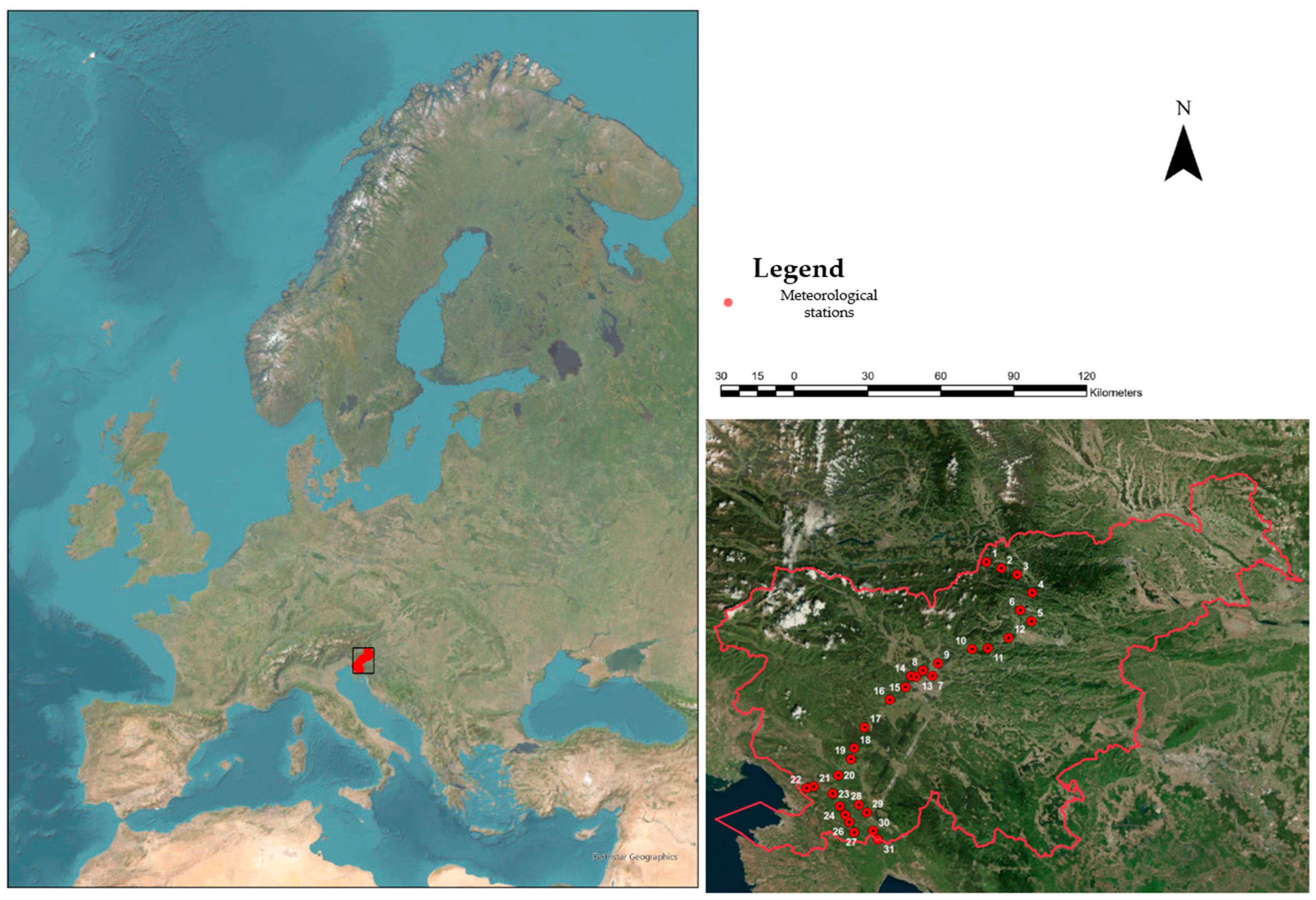

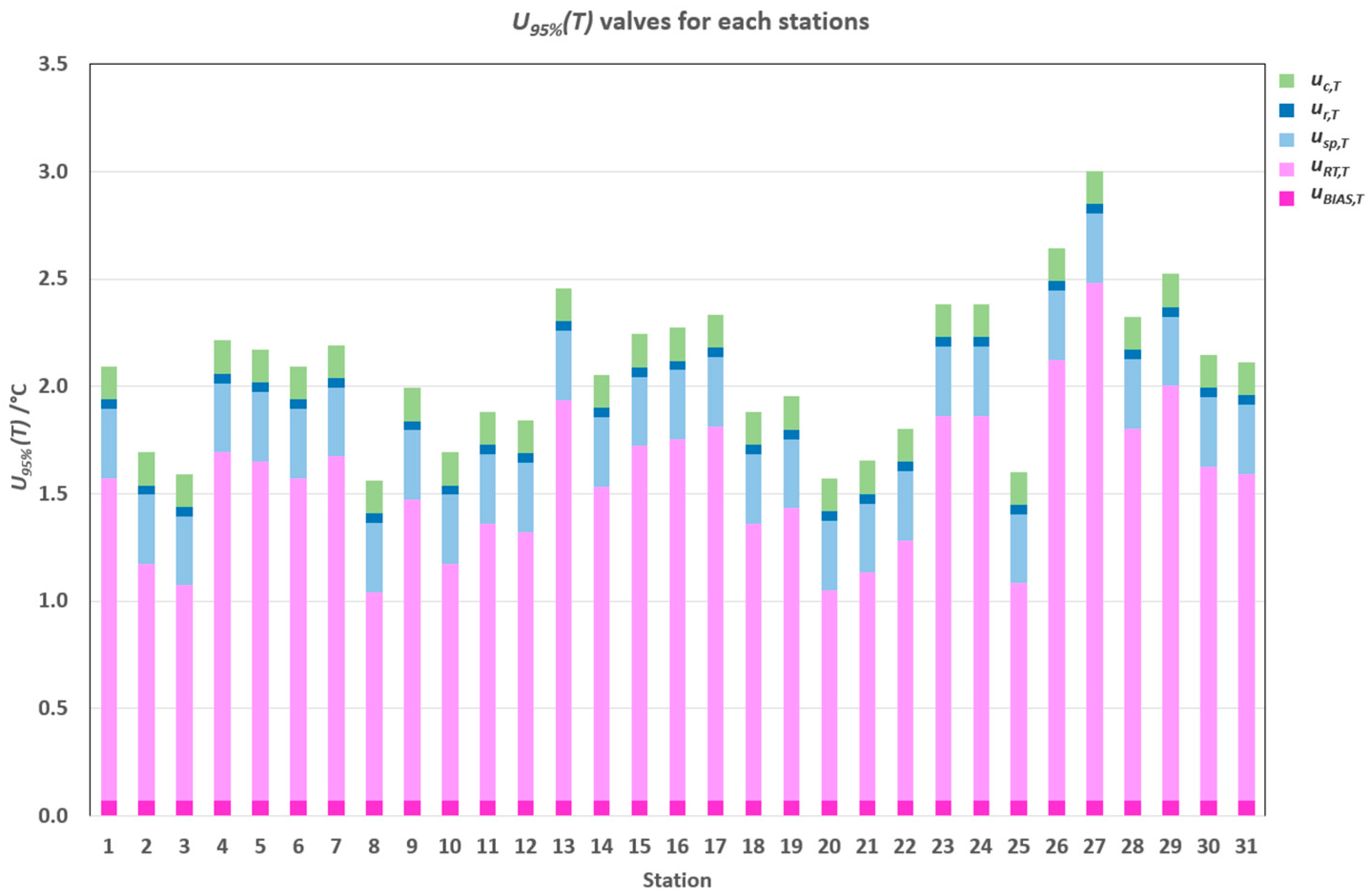
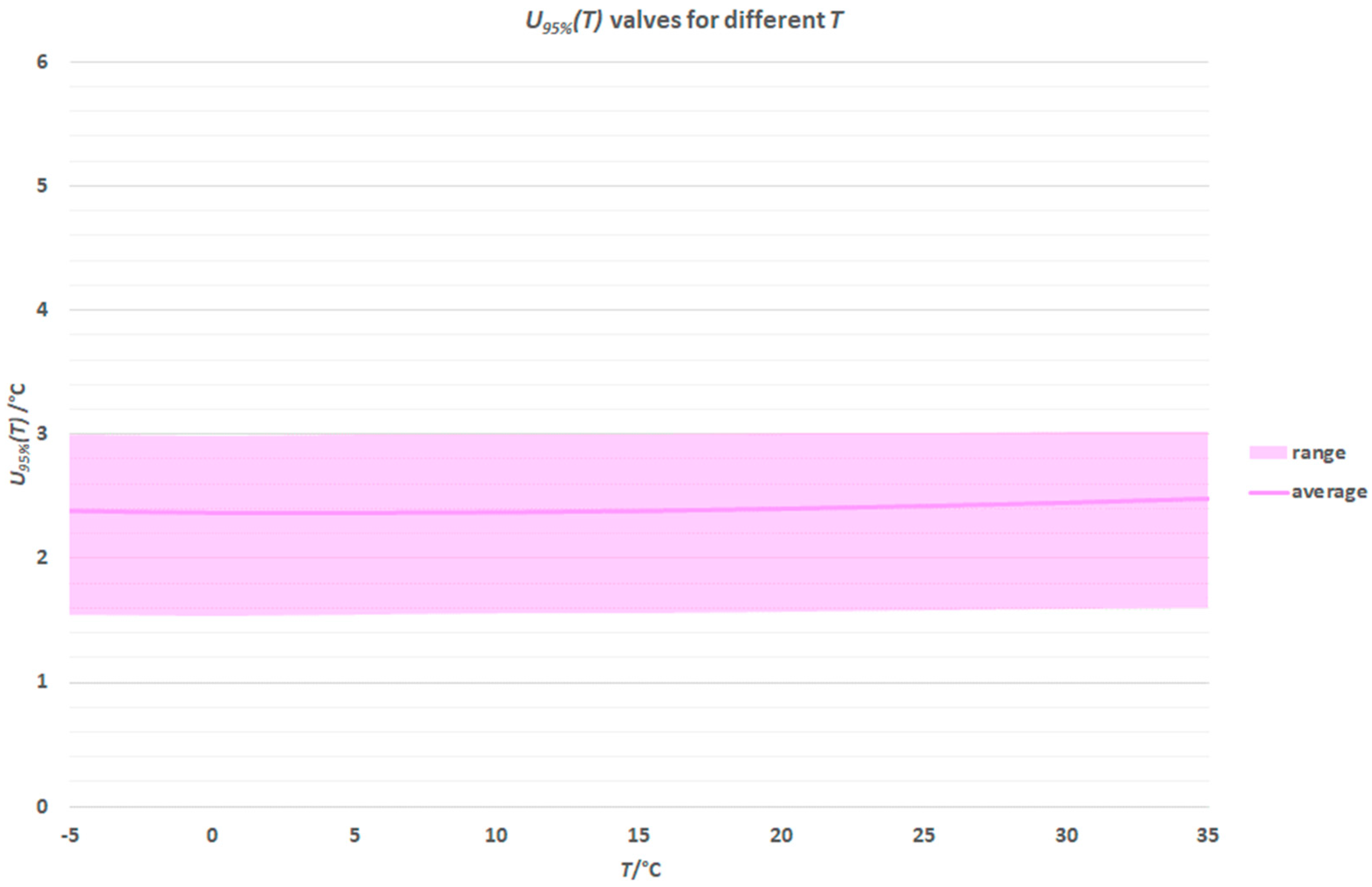

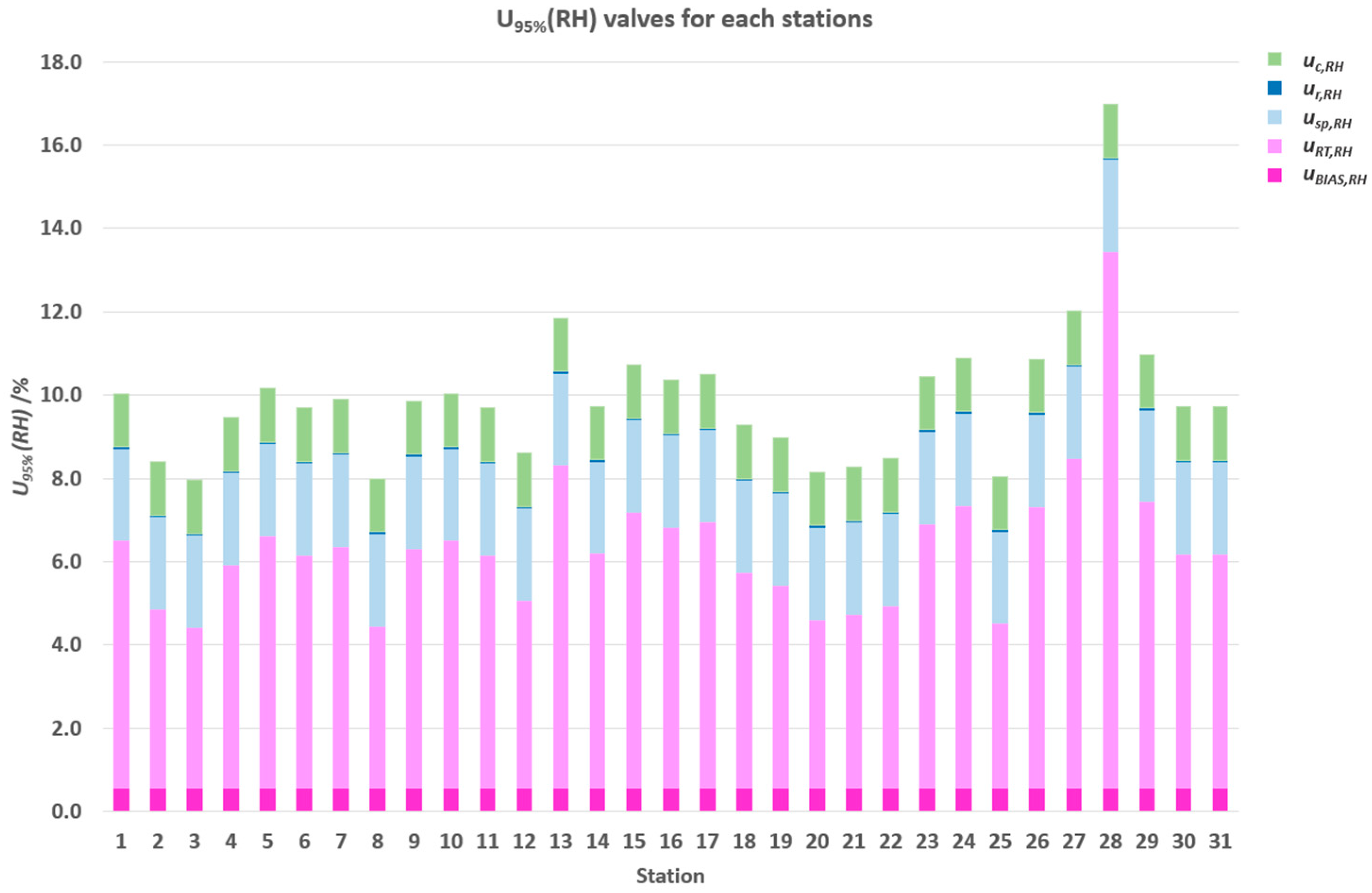
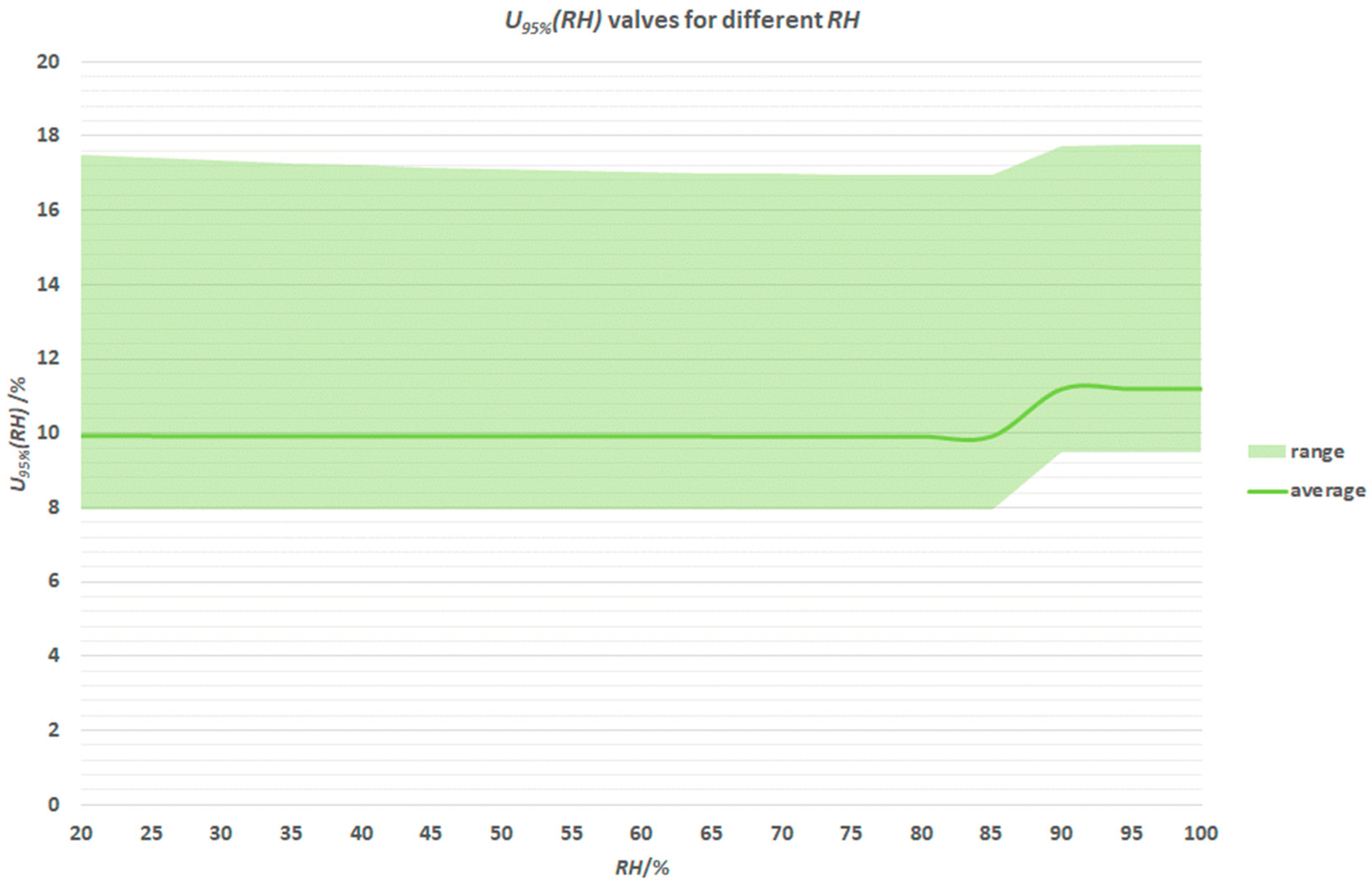

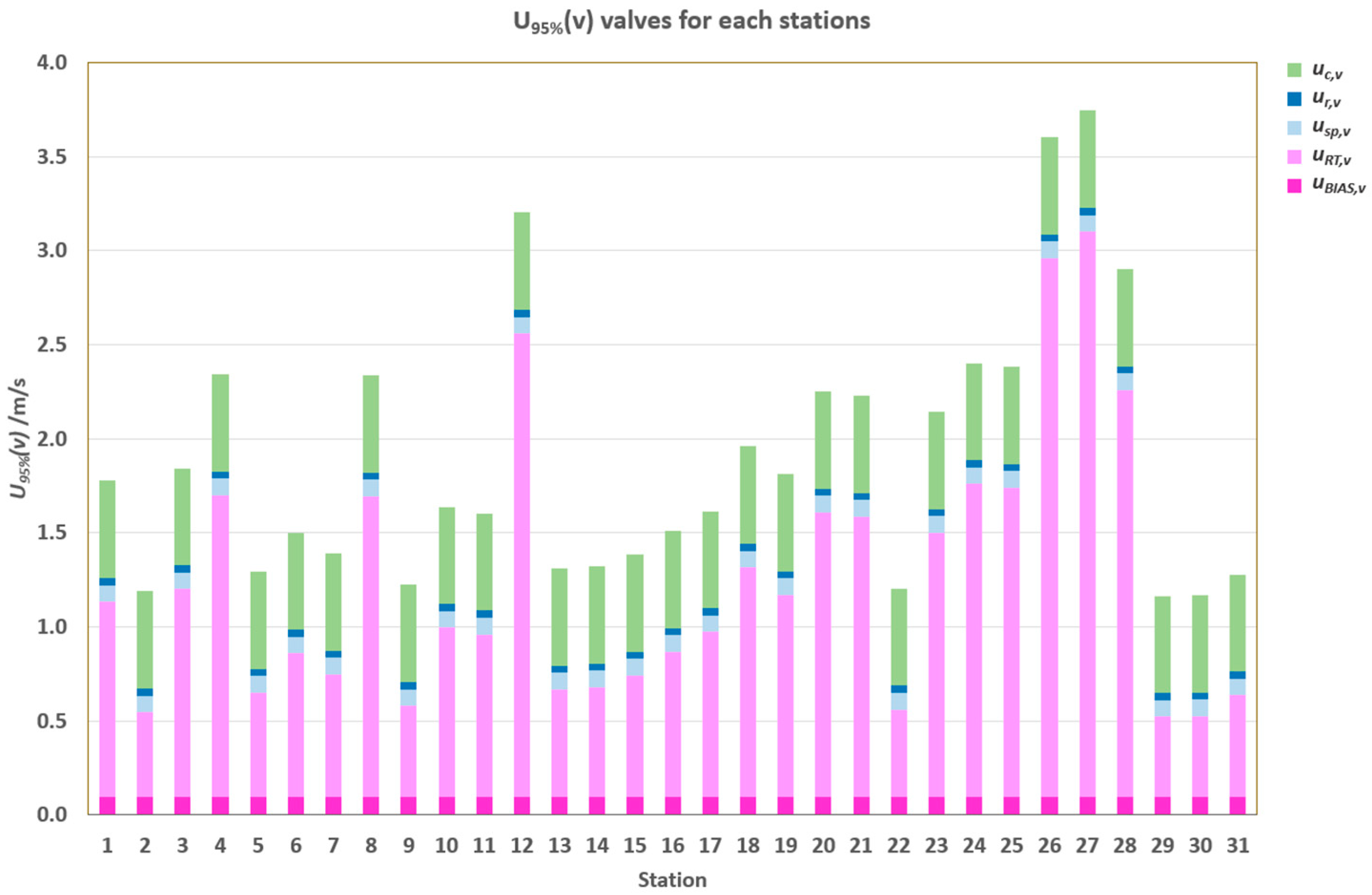
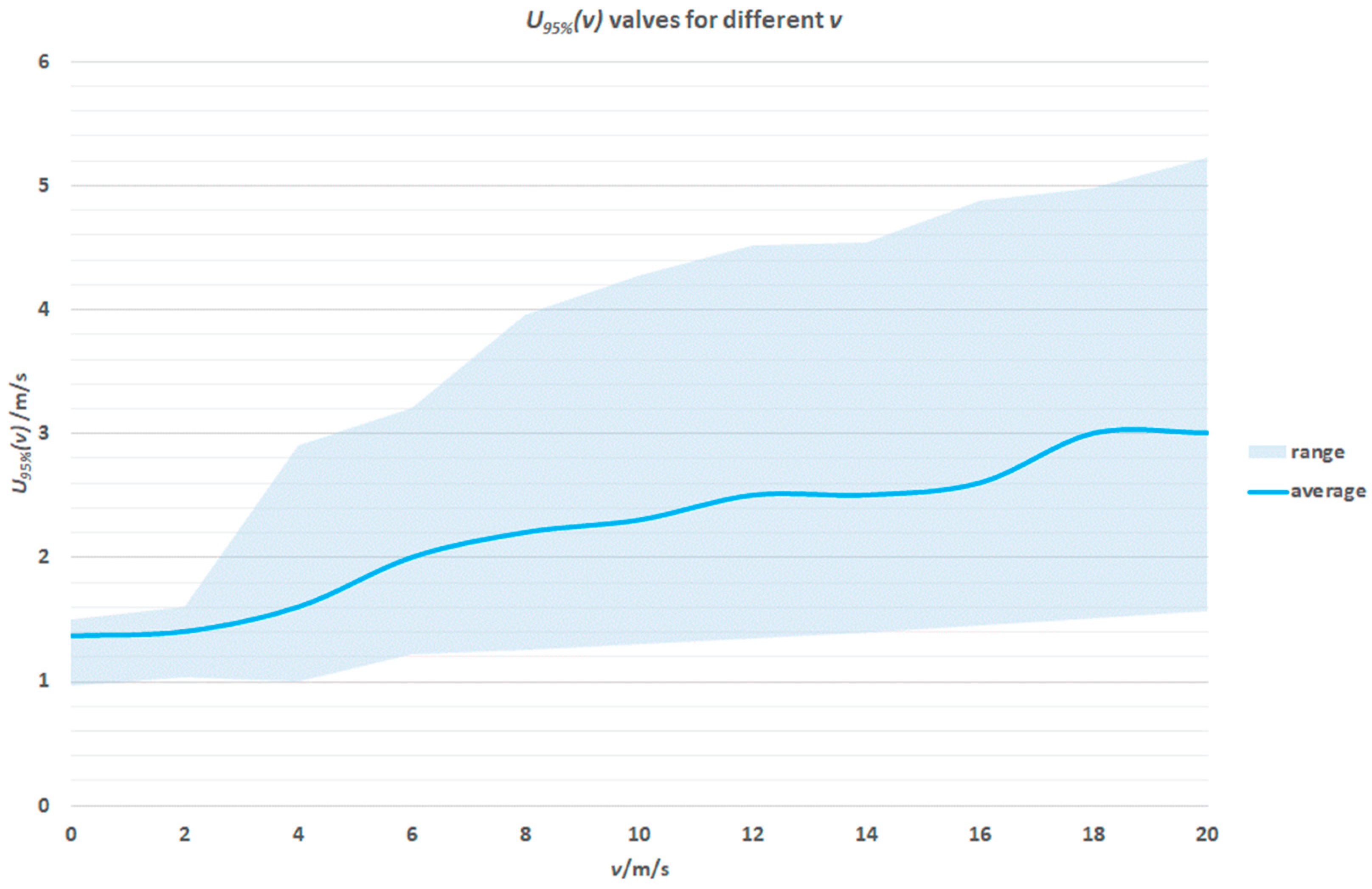
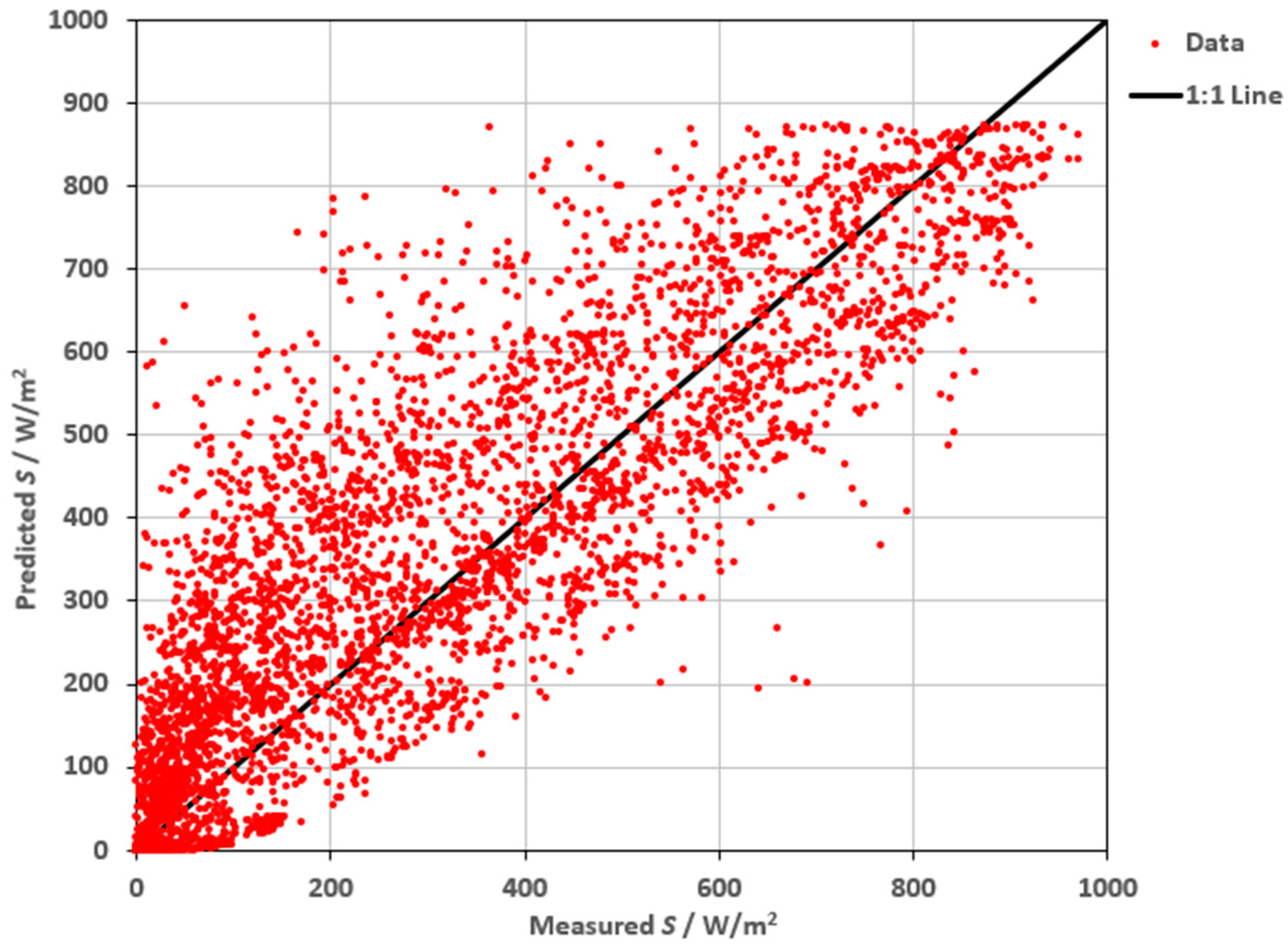
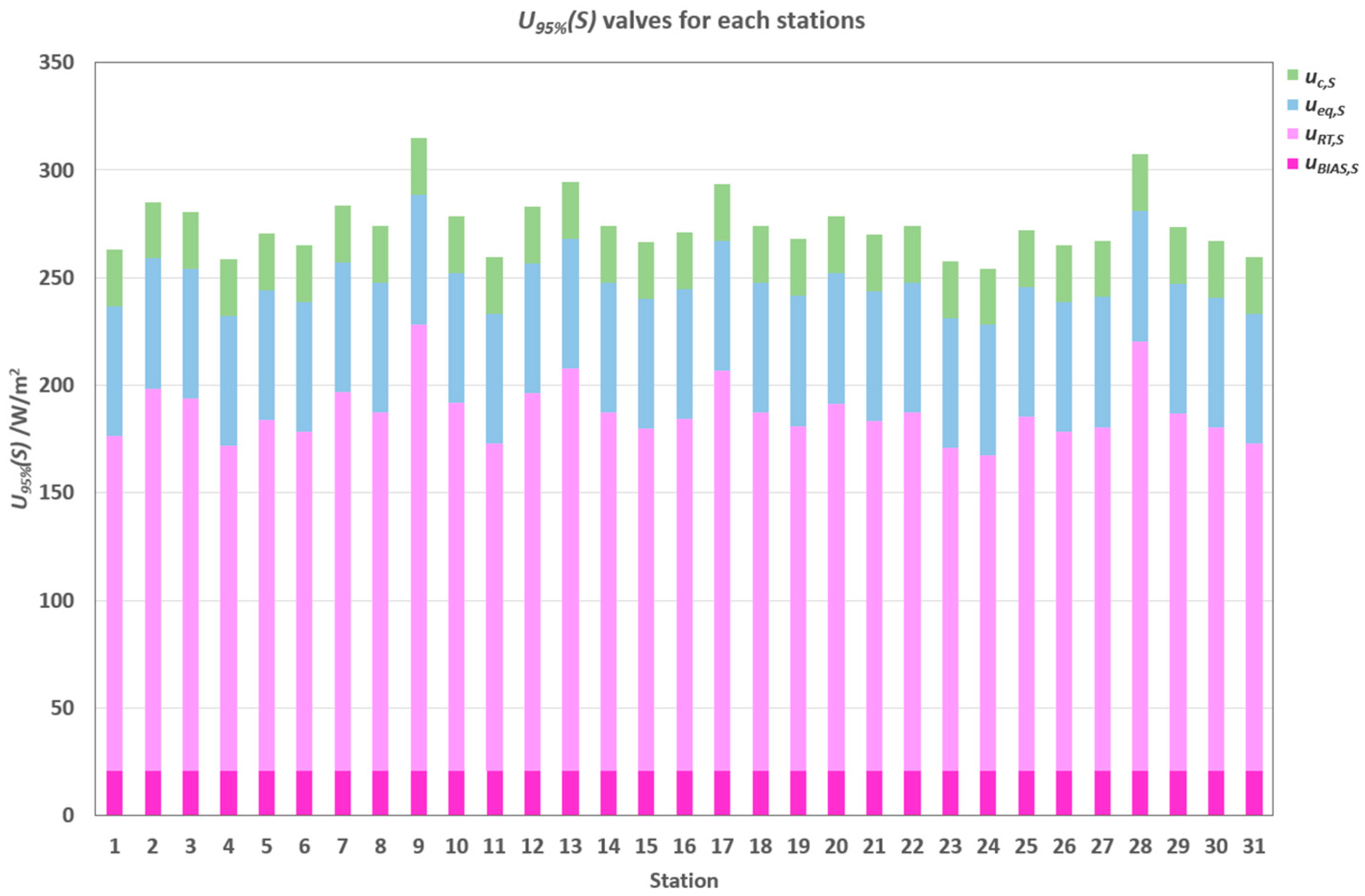
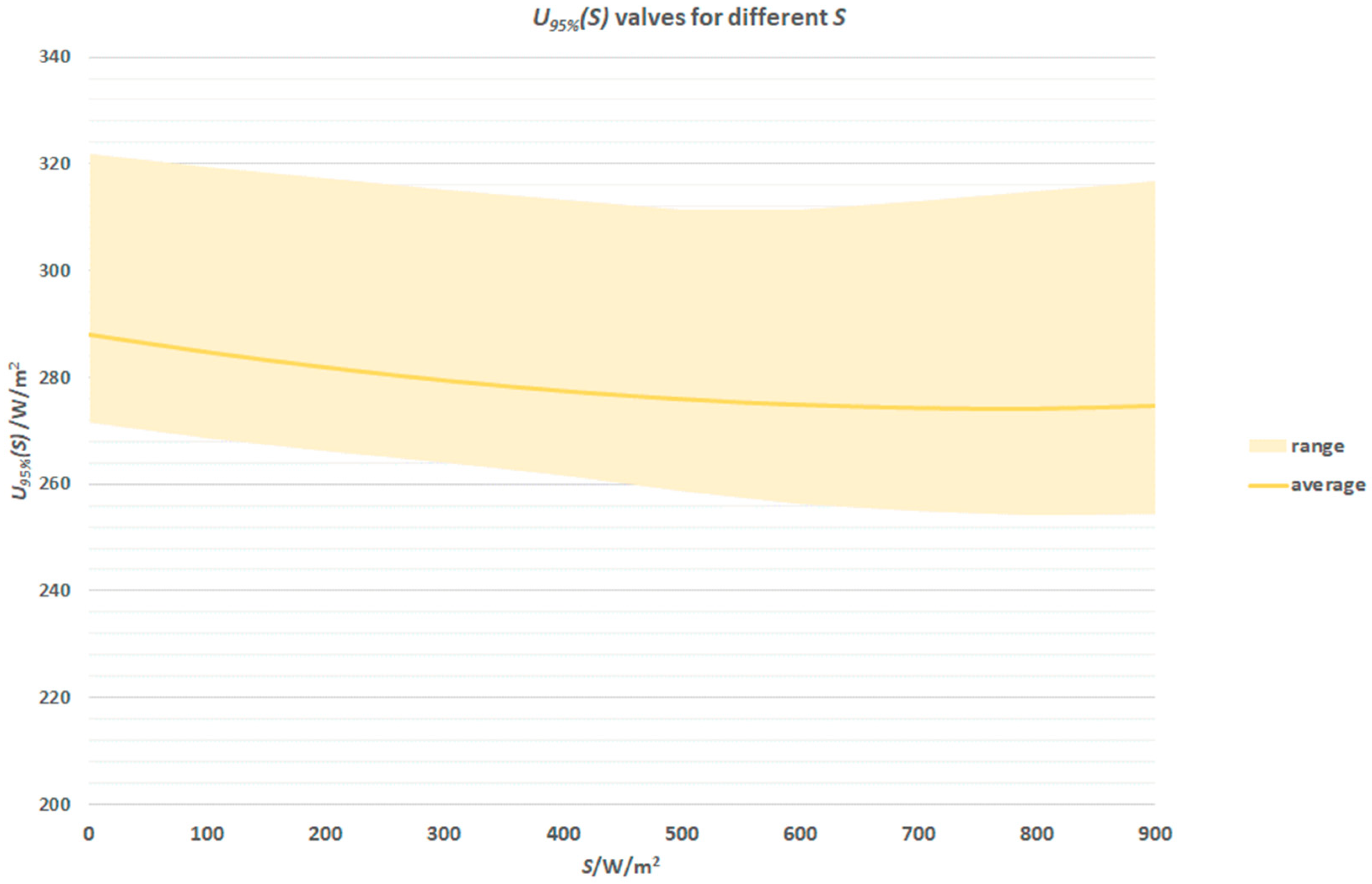
Disclaimer/Publisher’s Note: The statements, opinions and data contained in all publications are solely those of the individual author(s) and contributor(s) and not of MDPI and/or the editor(s). MDPI and/or the editor(s) disclaim responsibility for any injury to people or property resulting from any ideas, methods, instructions or products referred to in the content. |
© 2025 by the authors. Licensee MDPI, Basel, Switzerland. This article is an open access article distributed under the terms and conditions of the Creative Commons Attribution (CC BY) license (https://creativecommons.org/licenses/by/4.0/).
Share and Cite
Miklavčič, N.; Vončina, R.; Ivanovski, M. Enhancing Meteorological Insights: A Study of Uncertainty in CALMET. Meteorology 2025, 4, 10. https://doi.org/10.3390/meteorology4020010
Miklavčič N, Vončina R, Ivanovski M. Enhancing Meteorological Insights: A Study of Uncertainty in CALMET. Meteorology. 2025; 4(2):10. https://doi.org/10.3390/meteorology4020010
Chicago/Turabian StyleMiklavčič, Nina, Rudi Vončina, and Maja Ivanovski. 2025. "Enhancing Meteorological Insights: A Study of Uncertainty in CALMET" Meteorology 4, no. 2: 10. https://doi.org/10.3390/meteorology4020010
APA StyleMiklavčič, N., Vončina, R., & Ivanovski, M. (2025). Enhancing Meteorological Insights: A Study of Uncertainty in CALMET. Meteorology, 4(2), 10. https://doi.org/10.3390/meteorology4020010





